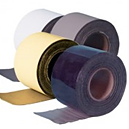What is Microsealant Technology?
- 27 April 2016
- Posted by: Madhuraka
- Category: Article
 The evolution of a product or material always starts out the same way. There’s the evolution of the form to satisfy function. The shape is refined, and enhancements are added to the product to grant it superior features. Chemical sealants work in much the same way. The compounds improve over time and add new and improved features. They gain tackiness, target specific applications, inject more strength into their chemical bonds, and the additional refinements branch into so many areas that they’re almost too numerous to describe in this short article.
The evolution of a product or material always starts out the same way. There’s the evolution of the form to satisfy function. The shape is refined, and enhancements are added to the product to grant it superior features. Chemical sealants work in much the same way. The compounds improve over time and add new and improved features. They gain tackiness, target specific applications, inject more strength into their chemical bonds, and the additional refinements branch into so many areas that they’re almost too numerous to describe in this short article.
The latest developments on the sealing and bonding front come from microsealant technology, a means of infusing all critically formulated bonding factors within a condensed realm. It is way down at this microscopic level that uniformly distributed fixing agents inhabit a fine substrate. Advanced primers and sealants cohabitate a specially formulated synthetic polymer, discretely existing as companionable sealing factors until called into service. The flexible material is typically fabricated as a long strip and assembled on a roll. As with other powerful tapes and films in this class, protective barriers come into play. These sandwiching films are the backings and liners that hold the super-sticky material in its pre-application state, ready for use in the harshest situations.
The built-in primer used in microsealant technology is designed to facilitate a near instantaneous bond. The primer fuses with the resins in the tape to form a flexible but impassable barrier, one that’s totally waterproof. Now, while many strong polymer films can boast waterproofing features, the bonding chemicals do not live up to this advertising gimmickry. This is why microsealant technology is so popular in the HVAC and building industry, for the secure adhesion factor delivered by this formulated bonding compound will not deteriorate when environmental influences attack. Water leaks don’t affect the resins. The primer holds steady when UV light, heat, and chemicals are in contact. And, best of all, this adhesion factor covers everything from concrete to metal, fusing the two surfaces down at the molecular level. In fact, silicone is just about the only material that this technology can’t bond with.
Used in plumbing, construction work, HVAC repairs, and countless other applications, the product relies on super-condensed chemical compounds, constituent substances that won’t cause a mess. The liners are removed, and the tape is ready for fast and easy application, at which point the seal is waterproof and ready for action. Usable in cold or hot temperatures, microsealant tapes permanently bond just about anything to anything else.

